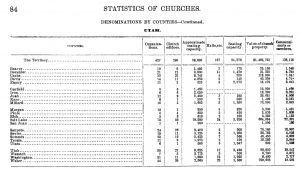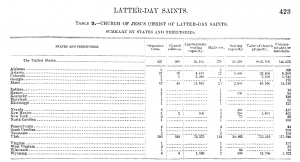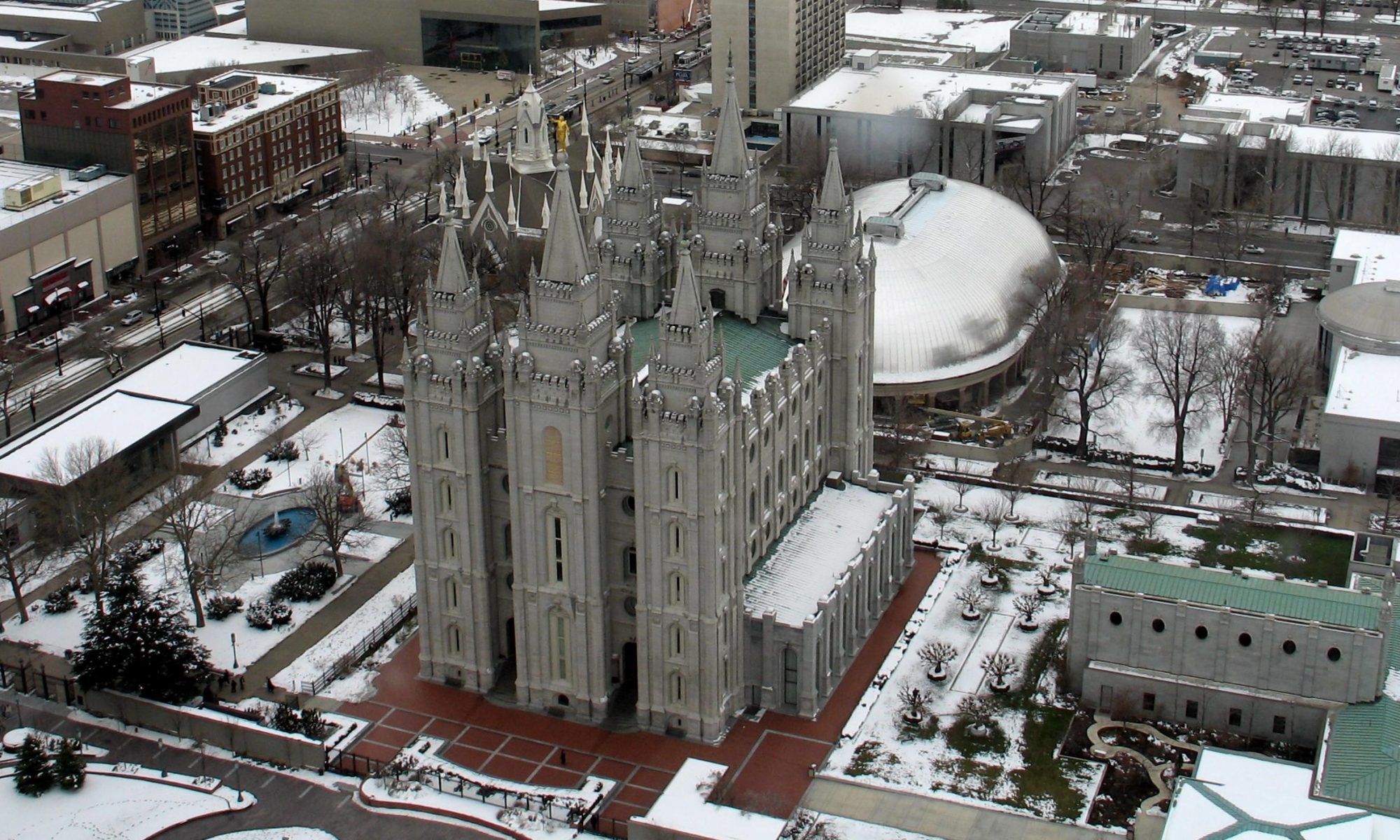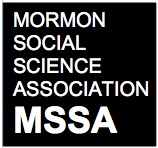Q: I am trying to find vital statistics and church activity statistics for the late nineteenth and early twentieth centuries for Utah. Does anyone have an idea where I might look?
A: We had two very helpful responses.
Armand Mauss suggested that the person asking about this information visit the new LDS Church library and archives in Salt Lake City. While there, contacting Rick Turley would be a good idea as he would know if such information exists. Other scholars who might have information on this would be: Tim Heaton, Tom Alexander, Bill Hartley, and Mike Quinn.
Anne Leahy did a bit of legwork to help answer the question. She found a book titled “Membership of the Church of Jesus Christ of Latter-day Saints by Age and Region, 1910-2000” in the Church History Library. She was kind enough to scan the relevant pages and send them to me digitally. I converted the scans (pdf here) into an Excel spreadsheet, which you can download here. The organization of the data is pretty bizarre as it includes cities, regions, counties and even some states as separate line entries. Even so, it does provide membership information in the US from 1910-1957, when it was compiled. To facilitate interpretation of the data, I added total LDS membership information for 1910, 1920, 1930, 1940, and 1950 from the Church Almanac. Doing so allowed me to calculate the percentage of the membership of the LDS Church that was based in the US during those years (ranges from about 85% down to 79%).
I’m unaware of any other sources specifically on the LDS Church involving membership and vital statistics information. However, there is also some helpful information on the Census Bureau’s website. For instance, in the Eleventh Census of the United States – 1890 – Vol. IX, there is a Report on the Statistics of Churches in the United States. That report provides some information on membership data at the county and state level. Here’s a copy of the number of denominations by county information:

This figure doesn’t indicate the total number of Mormons in Utah, but provides a sense of the number of members, roughly, in the state.
A better table is this one from that same report:

This table summarizes the number of Mormons by state. The bulk are in Utah and the surrounding states, but it does give a pretty good estimate of the number of Mormons in the US in 1890 – 144,352. The LDS Church reports 188,263 members that year, suggesting roughly 76% of Mormons live in the US in 1890, and 62% lived in Utah.
I checked the other censuses prior to 1900 and they do not have reports on religious affiliation. They do, however, have information on death rates. If you use Utah as a proxy for Mormons around that time, this may prove useful. Each of the Censuses is available on the census bureau’s website, starting with 1850, when Mormons were beginning to locate in Utah. See here. Another resource that may prove useful is the Statistical Abstract of the United States, which aggregates a variety of information. A quick perusal of some of the Abstracts prior to 1900 suggest they only have information on the population of Utah, but not on vital statistics. Later abstracts added additional information about populations, so you may find these more useful after the turn of the century.



